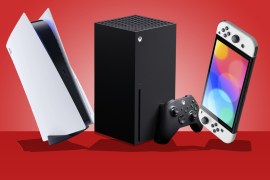Samsung Galaxy S6 Edge+ vs OnePlus 2: the weigh in
Chinese high-spec handset wages war on South Korean superphone
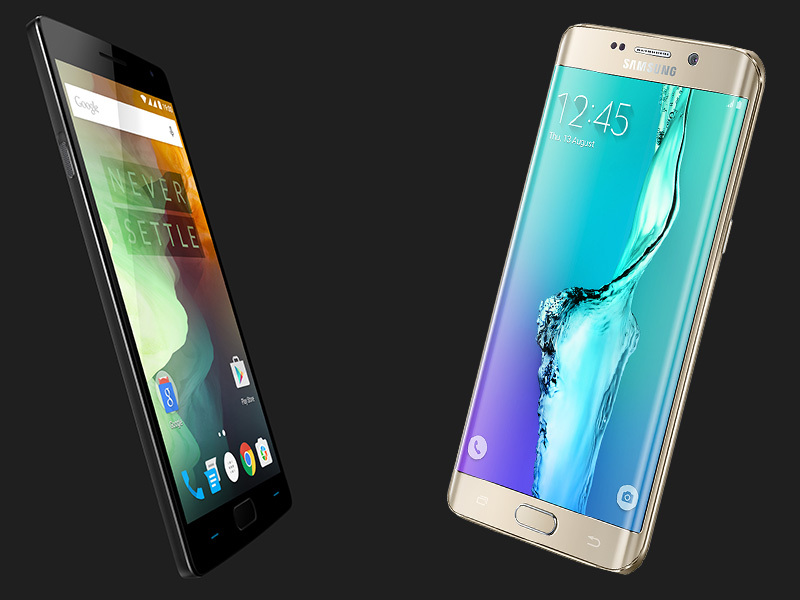
Samsung’s new flagship, the Galaxy S6 Edge+, is hitting UK shores on 4 September, bringing the phablet fight to the frontline.
But one device the South Korean manufacturer might not have reckoned with is the OnePlus 2: successor to the OnePlus One, which erupted onto the smartphone scene last year and took home your Reader’s Gadget of the Year Award as it did so, threatening to up the Chinese company’s game.
So, in a straight fight, which one should your money be on? Well, we can’t say for certain until we’ve fully reviewed both devices, but we can certainly see how they stack up against each other before they step into the Stuff reviews ring.
Big screen beauties
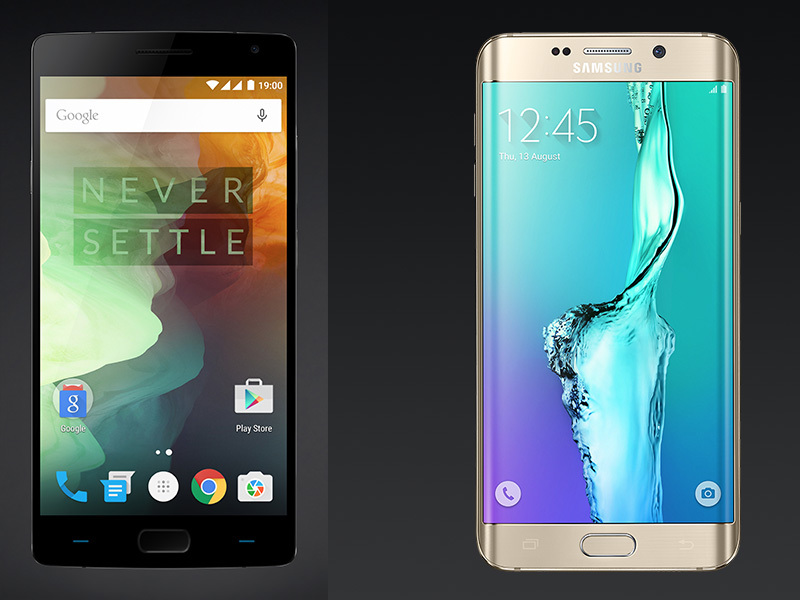
The Galaxy’s Edge series’ party trick is that now famous curved-edge display, and, with a software update to the Edge+, the wraparound element of its 5.7in AMOLED screen now has more functionality than ever, giving you customisable access to contacts and apps in an instant. What’s more, it still features that beautiful Quad HD resolution of the Edge (though slightly stretched to 518ppi down from 577ppi – as if you can tell).
What can the OnePlus challenger bring to the table in the face of such glorious glass? Well, its resolution is a lower 1080p, but, arguably, the degree to which the human eye can really discern the difference beyond this point is questionable, and it should save the OnePlus 2 a bit of juice on the ol’ battery. That, plus a 1500:1 contrast ratio and 178 degree viewing angles should mean the OnePlus should hold its own.
Nonetheless, it’s tough to beat the beauty of the S6 Edge+’s display, the usefulness of which looks set only to grow. Coupled with the fact that Samsung’s offering is rocking an AMOLED (as opposed to LCD) display – which means true blacks – we’re giving this one to the Galaxy S6 Edge+.
Enter the design dimension
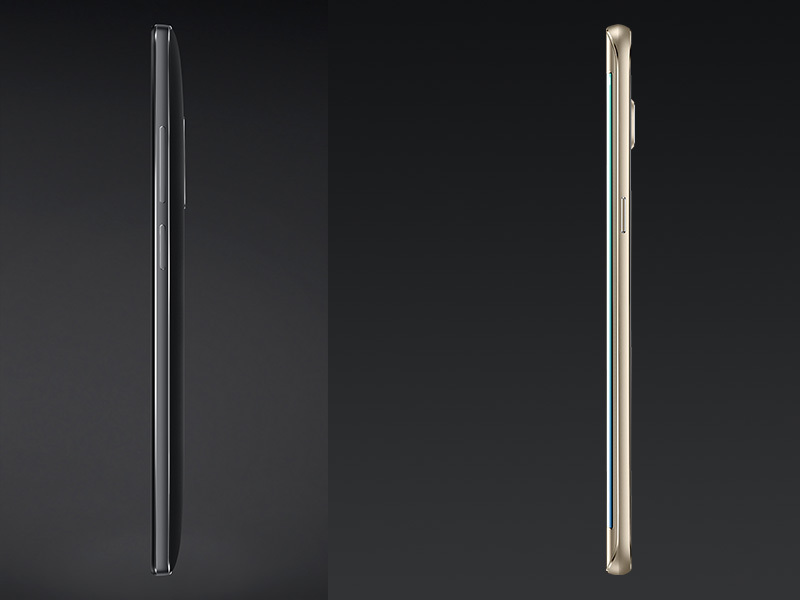
Ah, design – that most subjective of traits. The two handsets would struggle to be more different: the S6 Edge+ is replete with sleek, curved lines, gleaming glass and rounded metal edges; the OnePlus 2, by contrast, is the definitive rectangular phone, metal-edged, slim, flat and with swappable back plates.
We’re going to refrain from judgement between the two on looks alone – far be it for us to declare ourselves design deities, here are the numbers instead.
The OnePlus 2 is a fairly average 151.8 x 75.9 x 9.9mm in dimension, weighing in at 175g. The Edge+ measures in at 154.4 x 75.8 x 6.9mm, weighing 132g.
Both are whoppers, but on those specs the Galaxy is both the slimmer and the lighter of the two phablets. That said, some might prefer the heftier feel of the OnePlus, particularly considering the riskiness of that curving glass on the Samsung (even if it’s Gorilla strong).
If we had to choose, on a narrow margin we’d give it to the Edge+ – sleek and sexy suits us fine.
Pull the other One › Will the OnePlus 2 really be a “Flagship Killer”?
Revving it up
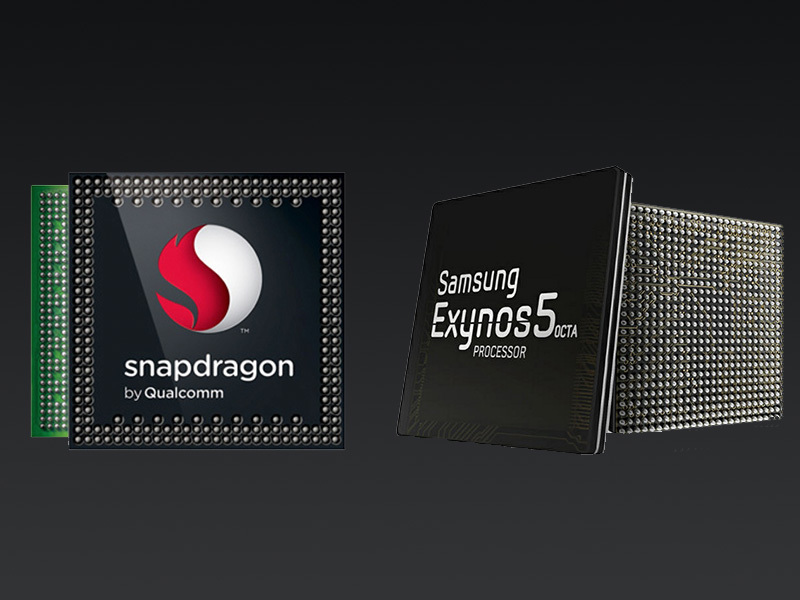
So far, so close – and that looks the same way on the internal specs.
Samsung has wedged an octa-core (2.1GHz quad and 1.5GHz quad) into the S6 Edge+, along with 4GB RAM, whilst OnePlus have pretty much equalled it with Qualcomm’s Snapdragon 810 octa-core powerhouse and 3GB or 4GB of ram, depending on whether you have the 16GB or 64GB version respectively.
How to separate two such finely-matched slabs of phablet? Both should deliver stonking multi-tasking and graphics-heavy gaming with that much under the hood, but the thorn in the OnePlus 2’s side might be the heating issues which have dogged the Snapdragon 810 (part of the reason Samsung so publicly ditched it in favour of their own Exynos core for the S6).
However, OnePlus has apparently addressed the issues by fitting an updated version of the chip, together with extensive cooling kit – only time will tell whether it does the job.
We’re calling this one a draw until we put both handsets through their paces in our full review.
What the juice?
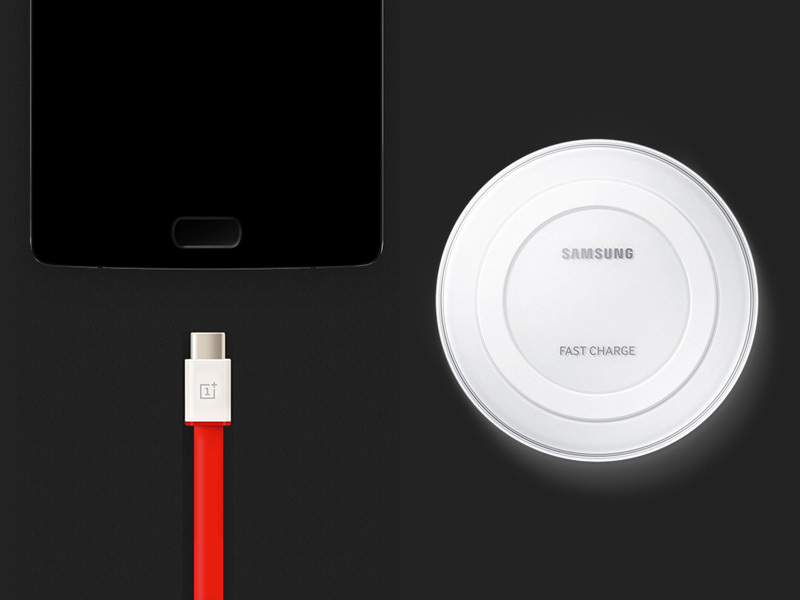
Call us odd, but we’re getting pretty excited about the S6 Edge+’s battery capabilities. Not only has Samsung crammed in a 3000mAh juice-pack, but the manufacturer has apparently also cracked wireless charging, claiming the Edge+ can be boosted from flat-to-full in 2hrs. If the results match the claims, this could be a game-changer.
The OnePlus trumps even the Galaxy’s battery on capacity, with a whopper of a 3300mAh pack inside. Whether it can outlast the Samsung will depend on the efficiency of the screen and whether those overheating issues with the processor have been solved.
Performance-wise, we think it’ll be a pretty tight call, but that rapid charging might steal it for the Edge+ if it can deliver results – only our full review will reveal the truth.
The OnePlus 2’s battery isn’t removable, though it does pack USB type-C with its increased data transfer speeds (unlike the Edge+).
This one’s close enough to be another draw.
Battery battering › LG might have the answer with hexagonal juice-packs
Storage wars
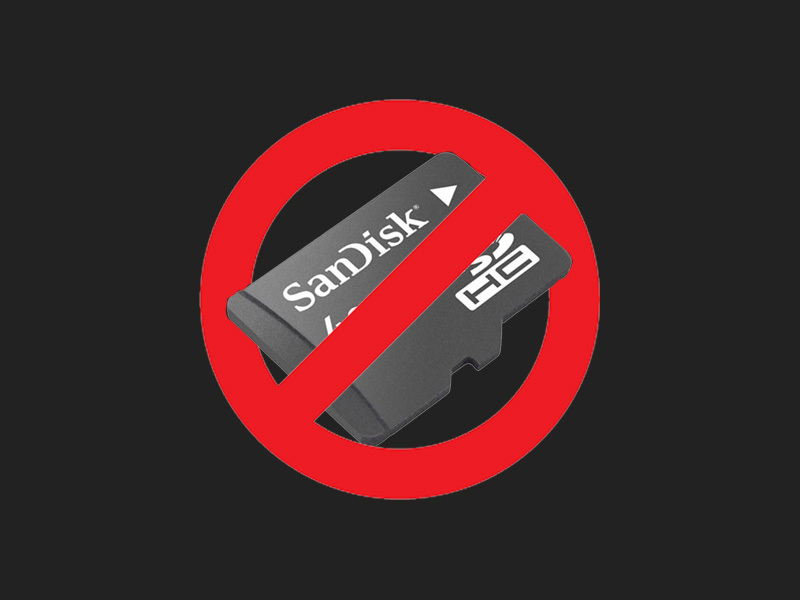
What about storage? Little use having such a corker of a screen on the Edge+ if you’ve got nowhere to cram all of your pics and vids. Oddly, whilst the S6 Edge comes in 32GB, 64GB and 128GB variants, the Edge+ only offers the first two. Or so we initially thought.
While there was no mention of 128GB Edge+ or Note 5 models at Samsung’s launch event, it has since been revealed that they will in fact be available.
The Edge+, like the original Edge, has non-expandable storage, meaning you’ll have to be a savvy media manager to make best use of those gigabytes, particularly if you’re into hi-res audio.
Still, it could be worse: the OnePlus comes in 16GB and 64GB options and it’s not expandable either. The move away from micro SD functionality is a confusing one, given its popularity with a lot of consumers and the relative cheapness of expansion it offers against buying a higher-capacity handset. This is particularly so on the OnePlus, given that it’s dual sim and Samsung have shown sim slots can double up as memory card readers.
Whatever the case, given that both lack expandable storage, it’s going to be another dead heat for now.
Shoot to kill
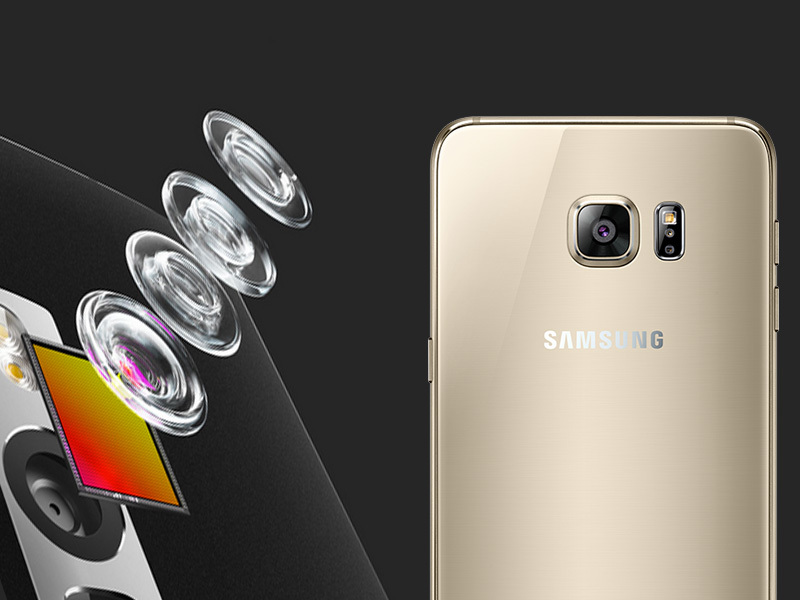
It’s still a two horse race, and that might just stay the same on imaging skills.
We loved the S6 Edge’s camera, and the Edge+ packs the same 16MP f/1.9 rear shooter (complete with slightly-upgraded optical image stabilisation) and a 5MP f/1.9 front-facer. We haven’t fully tested it yet, but the results are likely to be the same as for the S6 Edge – and that’s more than a good thing.
As for the OnePlus 2, it hasn’t shirked on shutter skills either: packing a 13MP rear camera, borrowing the lightning-fast laser autofocus from the LG G3 and G4 and also with optical image stabilisation, the 2 isn’t giving up without a fight. Similarly, its impressive 5MP front selfie-snapper from the One remains.
Both also shoot in 4K, making it a hairline race for camera supremacy. Samsung’s new “Live Video Broadcast” (a Periscope-esque streaming function) broadcasts footage on the fly to YouTube, and might just edge out victory for the Edge+ – but until we’ve fully tested it, we’re calling this one another tie.
Master the art › Smartphone photography jargon and what it all means
Keepin’ it soft
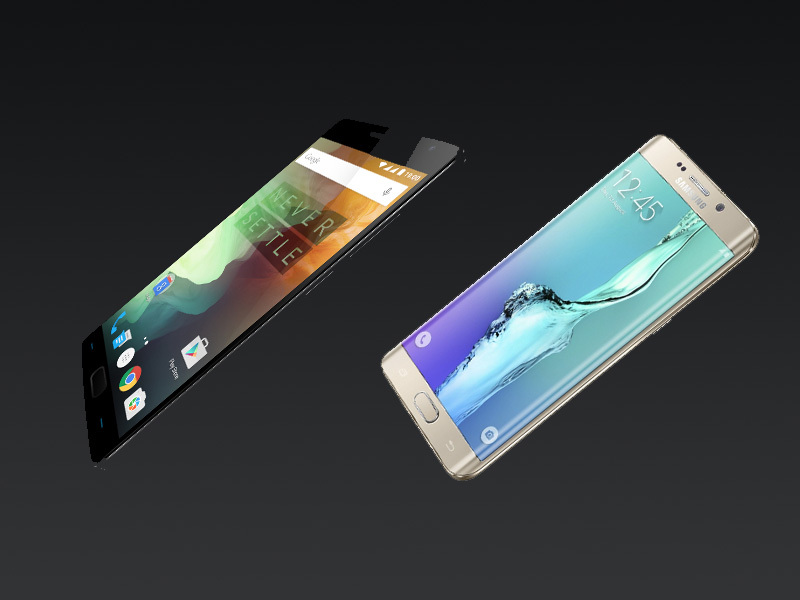
Will there be a victor in this initial weigh in? Well, their software offerings are pretty different.
OnePlus is very proud of its bespoke Oxygen OS, a custom build of Android which adds a few features whilst avoiding bloating the stock Lollipop UI. Per-app permissions, for example, allow you to block others from accessing private data; there’s also Dark mode for midnight mobile moguls looking to save their retinae.
But, fear not: the S6 Edge+ is not devoid of software trickery either. In addition to that live video broadcasting functionality, the Edge+ now makes better use of its curved edges through Apps Edge – a customisable stack of icons instantly accessible from the wraparound part of the display. This is in addition to People Stack, retained from the S6 Edge, which allows you to instantly get at your favourite (or most important) contacts.
Which software tricks are more useful? We’re giving it to the Edge+, only because Samsung is actually implementing software features unavailable on any other handset (though they probably will trickle down to the original S6 Edge, in time).
Best of the rest
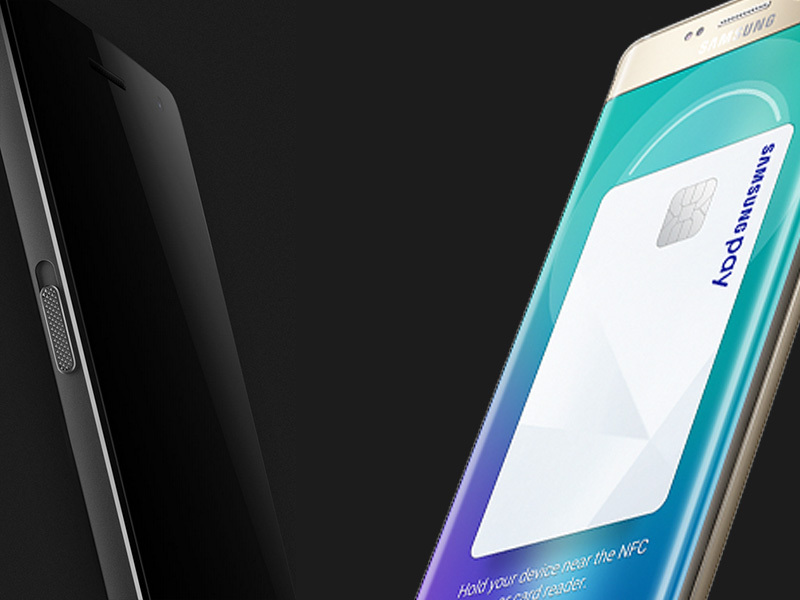
The Edge+ might have nosed out a narrow lead, but what of the unique perks of each device?
Both feature fingerprint scanners but, bizarrely, OnePlus have dropped NFC from the 2, meaning no Oyster card or contactless wallet; this is even more of a coup for Samsung given their introduction of Samsung Pay (taking the fight to Apple) which allows payments via contactless and its magnetic stripe payment system.
What the OnePlus has that the Edge+ lacks (in addition to its alert switch on the side) is dual sim capability, meaning no switching out if you have an international sim or keep work and home numbers on the same handset (risky).
However, dual sim isn’t as big a seller in European markets as in Asia, and if Samsung can integrate and broadly implement its pay infrastructure then it might be onto a winner. For now, the Edge+ clinches this round.
Say hello › Android Pay, Android M on the way
Initial Verdict: over the Edge+ or second gen superstar?
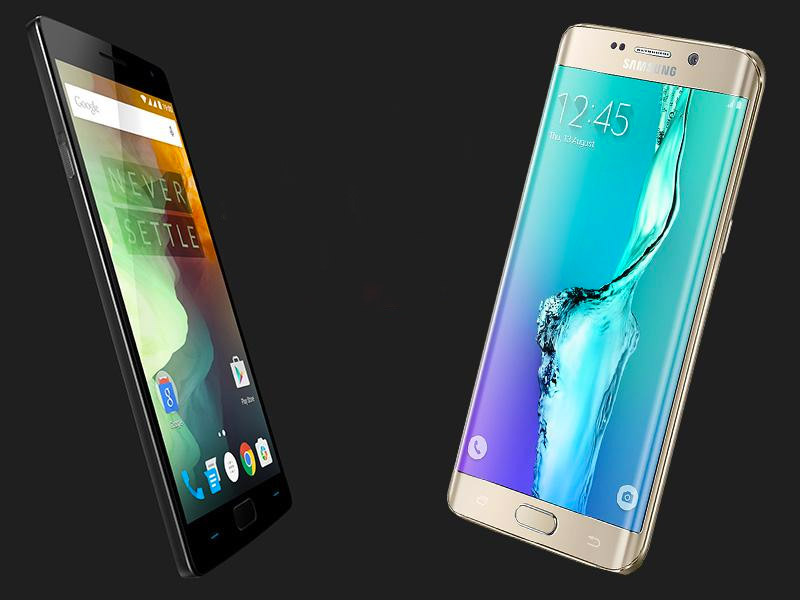
It looks, then, like the Edge+ has just about seized victory over the left-field OnePlus.
The second version of OnePlus’ market-beater, despite being branded as a “Flagship Killer”, isn’t quite the whopper we were hoping for, lacking expandable storage, NFC and a removable battery, and given that it’s much more difficult to actually acquire a OnePlus 2 (thanks to its online invitation system), it might just be beaten by Samsung’s new baby.
But, and here’s the kicker, it pays (literally) not to forget the prices of the two devices: OnePlus’ new 64GB flagship is open to order (via invitation) for £289. The S6 Edge+? You can pick up a 32GB model for a steal at £700. Yep, that’s more than double the price for half the storage.
On tech specs alone, the Edge+ does have the OnePlus beaten; but does it have the 2 £420-worth of beaten? We think not: as the OnePlus suggests, it’s simple mathematics.
Stay tuned for our full reviews of both devices, after which we’ll update this comparison to reflect the definitive winner.
Get the low down › 10 things you need to know about the Galaxy Note 5 and S6 Edge+

